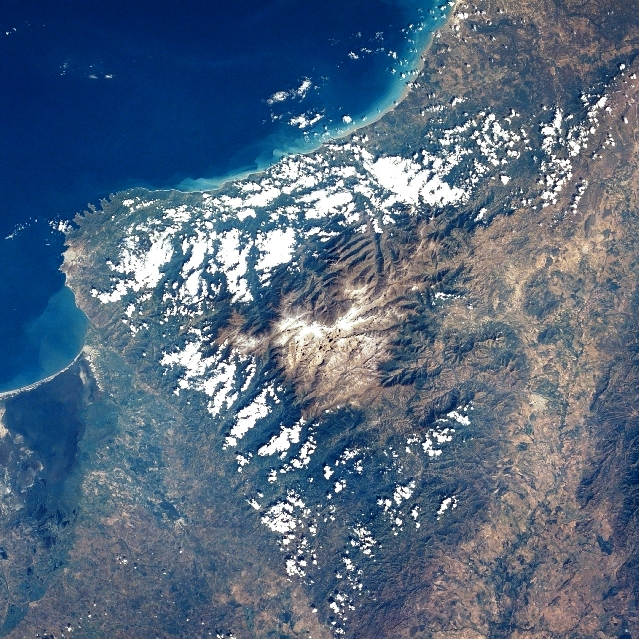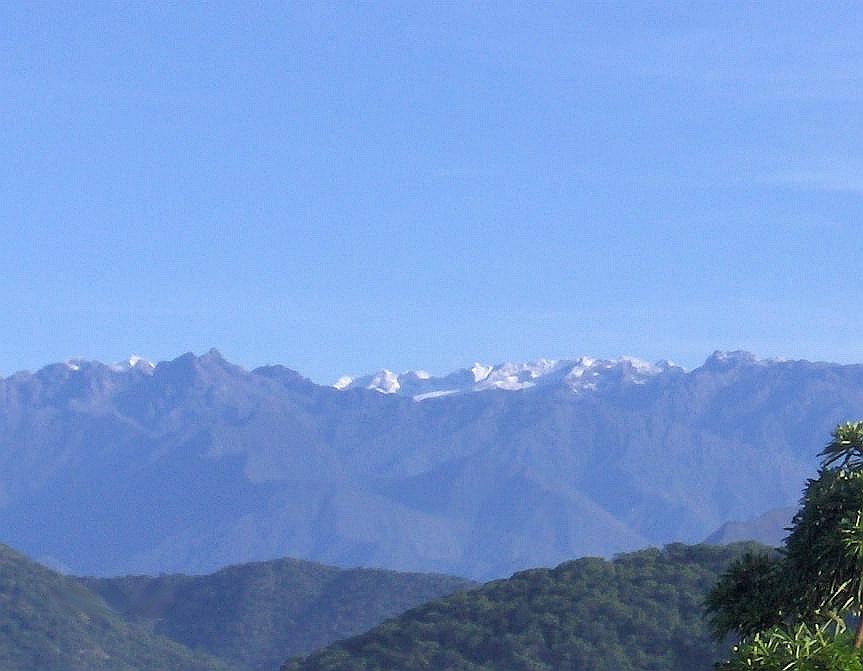MIAMI – Indigenous communities along Colombia’s northern Caribbean coast have been the targets of a series of attacks to destroy sacred sites by arson. The attacks are linked to the Indigenous people’s resistance to the exploitation of the land, specifically their opposition to illegal mining and their constant protection of their sacred land and environmental advocacy.
There are several Indigenous communities in the region. There are currently about 30,000 Indigenous people of the ethnic groups Koguis, Arhuacos, Kankuamos, and Wiwa living along the Sierra Nevada de Santa Marta in the tropical Andes. The mountain range is called Umunukunu in the native language.
The area is also one of Colombia’s national parks that begins about 25 miles from the Caribbean coast and was designated a biosphere reserve by UNESCO in 1979. It is also the location of Ciudad Perdida or The Lost City, the archeological site of an ancient city created by the Tairona culture. The site was discovered in 1972 and almost immediately looted. The Colombian government protested that, “Treasures from the site, including gold figures and ceramics, soon began to appear on the black market.”

Sierra Nevada de Santa Marta from Space [Public Domain]
The site has seen exceptional violence in the last quarter-century. It was scarred by the Colombian armed conflict the Colombian National Army, and both right-wing paramilitary groups and left-wing guerrilla groups including the FARC, the Revolutionary Armed Forces of Colombia.
The International Federation for Human Rights (FIDH) said that, “180 members of indigenous groups of the Sierra Nevada of Santa Marta, Colombia were victims of crimes against humanity perpetrated between 2002 and 2009, by the Colombian army and by paramilitary groups.”
FIDH notes, “These crimes were perpetrated as part of a systematic attack against the civilian population of the Sierra Nevada, putting at serious risk the physical and spiritual survival of the Wiwa, Kankuamo, Arhuaco and Kogui indigenous people, guardians of the heart of the world, the Sierra Nevada of Santa Marta.”
It adds that, “Today, a reconfiguration of forces is taking place in the area, at the hands of armed groups that control the main licit and illicit activities in the Sierra in search of greater territorial control, some of which maintain links with former paramilitary groups. The current reconfiguration has caused the destruction of cultural property, killings of community supporters, control of mobility, forced recruitment of minors, and forced displacement of the population. It is important to remember that in 2020, 47 indigenous leaders were assassinated, adding to the 262 indigenous leaders assassinated since the signing of the peace agreements.”

Sierra Nevada de Santa Marta desde Valledupar, Colombia. [Photo Credit: Nick29 Public Domain]
The most recent attacks began in the pre-dawn hours on December 12. Two ceremonial centers, called kankurwas, of the Minakalwa community, were burned. They appear to be related to opposition by the Indigenous communities to a dam project in the Jerez river and the denouncement of illegal mining and the presence of armed groups within the Sierra Nevada de Santa Marta.
Jaime Luis Arias Ramírez, the Indigenous governor said he and his family’s residence which is roughly 20 meters away, was also damaged. Ramírez said that these are systematic attacks to create instability and intimidate the community.
“This is an attack against our government and natural heritage, against our ceremonial houses, that our spiritual fathers and mothers have left in our care to preserve the territory, our culture, and our cultural practices,” Arias Ramírez said.
The most recent attack was during the night of December 24, Christmas eve or Nochebuena. This attack on two ceremonial homes, called Ungumas, from the Wiwa indigenous community, in the nearby region of La Guajira. The Ungumas serve to strengthen community autonomy through self-government under the ancestral principles, and to support the management and control of ancestral places of the Wiwa people.
To date, five ceremonial sites have been destroyed.
The National Indigenous Organization of Colombia (ONIC) repudiated the events through its Twitter account: “We denounce and reject the burning of the kankurwas (sacred houses) of the Kankuamo people, this event occurred this morning in the Minakalwa community, Kankuamo territory, Valledupar, Cesar.”
#ATENCIÓN| Anoche en la comunidad de Sabanas de Joaquina en San Juan del Cesar, La Guajira. Fueron quemadas dos Kankurwa del Pueblo Wiwa, los Pueblos Indígenas de la Sierra Nevada de Santa Marta, RECHAZAN este hecho de persecución a los sitios sagrados.
| #SOSPueblosIndígenas. pic.twitter.com/1zcxYveuMh
— Organización Nacional Indígena de Colombia – ONIC (@ONIC_Colombia) December 25, 2021
In a statement, Council wrote that is certain that, “these events were caused deliberately and maliciously,” and points out that the violence is specifically targeting the Indigenous communities.
The Council said, “We are a People of peace, dialogue, and harmony. We absolutely reject any manifestation of violence against our People and our Territory.”
The Council added that the authorities and leaders of the towns are being threatened, there are members of the communities who are singled out and stigmatized and some who disappear. In addition, in their territories, they have encountered unknown armed persons and other cases of violations of their rights.
One Indigenous leader told El Colombiano, “We are concerned about the situation of the communities of the Wiwa people with the burning of our tangible and intangible cultural heritage.”
Sites like kankurwas that include Ungumas (sacred ceremonial homes for boys or men) and Ushuis (sacred ceremonial homes for girls or women) serve more than administrative functions. They are places where Indigenous spirituality is taught to future generations in each community.
As yet, no group has taken responsibility for the terror. However, the Indigenous communities have reported the appearance of pamphlets allegedly attributed to the Black Eagles and the United Self-Defense Forces of Colombia.
The Black Eagles is a Colombian drug trafficking, right-wing, counter-revolutionary, paramilitary organization made up of new and preexisting paramilitary forces. The United Self-Defense Forces of Colombia was a Colombian far-right paramilitary and drug trafficking group responsible for the Mapiripán massacre and has been inactive since 2006.
Iván Luquez Mindiola, general secretary of the Kankuamo People, said that this is just one more attack in a violent and hateful escalation against Indigenous people, since in previous years other sacred centers have already been burned, without any forceful actions by the authorities.
Arias Ramirez said, “We turn to the competent authorities, the national government, and international organizations so that they can combine their capabilities to protect our people and prevent these actions on against our people.”
The Wild Hunt is not responsible for links to external content.
To join a conversation on this post:
Visit our The Wild Hunt subreddit! Point your favorite browser to https://www.reddit.com/r/The_Wild_Hunt_News/, then click “JOIN”. Make sure to click the bell, too, to be notified of new articles posted to our subreddit.
